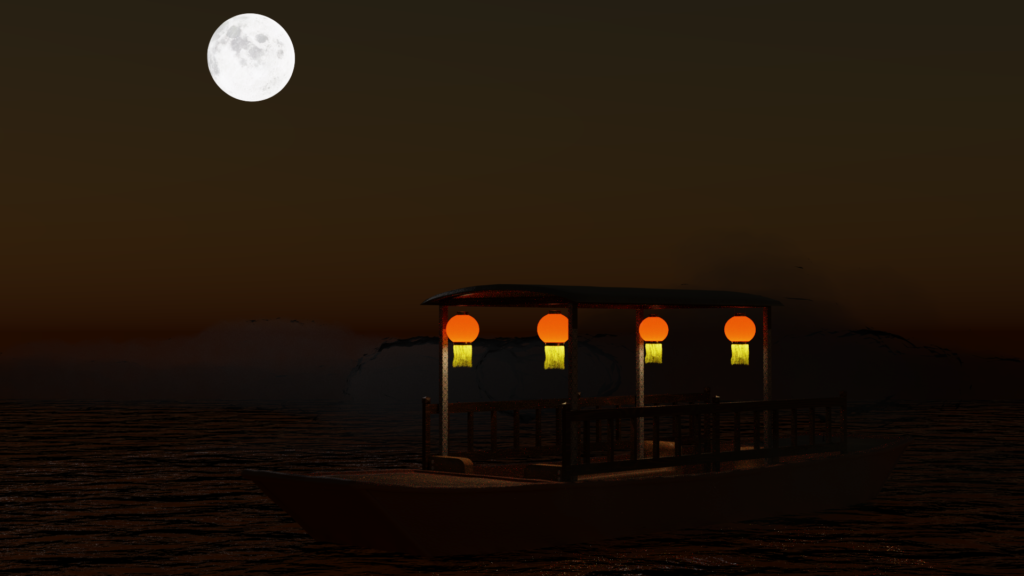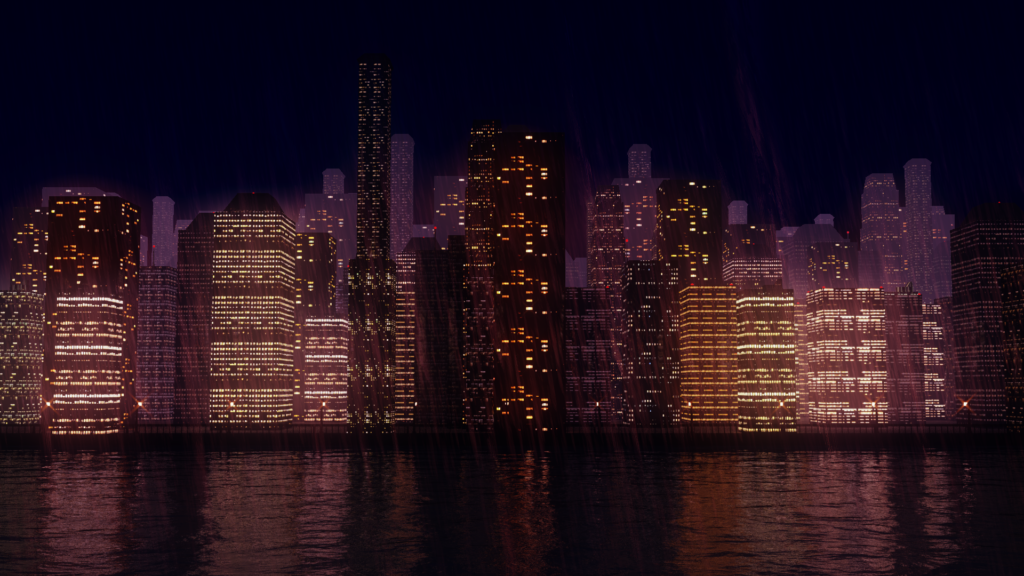
Some less ambitious renders this month, as the previous batch were far too time consuming. Unfortunately they turned out to be even more basic than I’d imagined. The above for example would only really work if I did a lot of compositing work on it and I still don’t really understand it yet. It also needs more light sources for the water reflections to look good. Oh well. I’ll try to put in more effort on the next batch.

This tutorial from CG Geek shows how it’s supposed to be done, with plenty of lights from the buildings and a background glow. It still doesn’t look great because the buildings look very generic but it’s a good example of the work being good enough for the amount of work put into it. Obviously this would look much, much better if you actually modelled individual buildings realistically using real world ones as guides. But that would also take much, much more work.
He also goes into compositing work that is frankly magic to me for the mist effects and to tweak the colors. Again, I really need to get more practice doing that if I want my own projects to look good.

One thing I didn’t like about my balcony project was that my plant models didn’t really look good. While they looked okay from a distance, they’re ugly up close. Here’s my best attempt at creating something better. It’s still not photorealistic but I think it’s much better.
As I side note, I found it surprisingly difficult to come up with a material for curtains that worked as I wanted them to. I wanted them to be translucent so that light would pass through them but I also didn’t want the light to be so bright as to wash out details like creases on the surface. Anyway I’ll probably use this as part of a larger scene in the next batch of renders.

Finally here’s going back to Blender Guru with a tutorial about making realistic looking snow. To be honest, this isn’t much of a Blender project at all as very little of the work is done in the program itself. All of the magic happens in a height map image used to specify information on the level of the snow and this must be manually painted the old fashioned way. Price does make things a lot easier by providing a nice set of custom brushes to work with snow.
Andrew Price uses Photoshop in his tutorial to do the painting. As I neither know nor own the software, I substituted GIMP instead. I’d installed it ages ago but never got around to learning it so a lot of my time was getting up to speed with the basics before even starting this project. Making the above wasn’t too difficult but I did realize that GIMP is inferior to Photoshop as Price is able to do things like mirror the brushes which you can’t do in GIMP internally. It makes for a pleasant diversion for the usual work in Blender but I worry that I will completely forget how to do this in a few months.